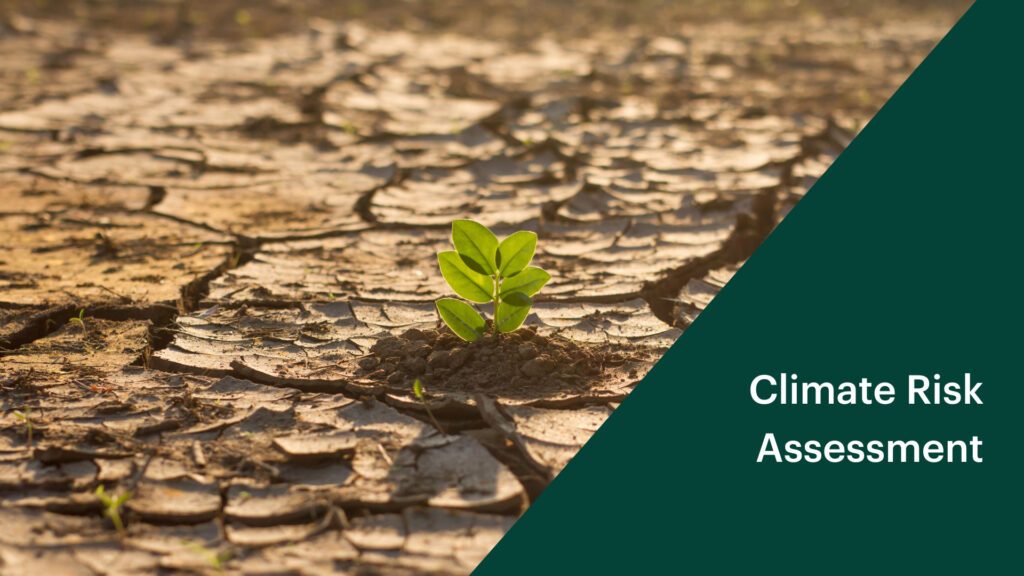Climate change is no longer a distant threat—it’s a present and escalating challenge affecting every corner of the globe. From rising sea levels and extreme weather events to supply chain disruptions and health risks, the consequences of a warming planet are being felt across economies, industries, and communities. To navigate this complex landscape, organizations, governments, and investors are increasingly turning to climate risk assessment as a critical tool for understanding vulnerabilities and planning for the future.
What is Climate Risk Assessment?
Climate risk assessment is the process of identifying, analyzing, and evaluating the potential impacts of climate change on systems, operations, assets, and people. It helps decision-makers understand both physical and transitional risks related to climate change, enabling informed strategies to mitigate these risks and adapt accordingly.
There are two main categories of climate risks:
- Physical Risks: These involve direct threats from climate-related events such as floods, hurricanes, wildfires, heatwaves, and droughts. They can cause damage to infrastructure, reduce agricultural yields, disrupt transportation, and threaten human health and safety.
- Transition Risks: These arise from the shift toward a low-carbon economy. They include regulatory changes (like carbon taxes), shifts in market preferences (toward sustainable products), technological disruptions, and reputational risks for businesses not aligned with environmental goals.
Why is Climate Risk Assessment Important?
Ignoring climate risks can lead to severe financial losses, regulatory penalties, and reputational damage. On the other hand, proactively assessing and addressing these risks offers several benefits:
- Risk Reduction: Identify vulnerabilities and take action to reduce the likelihood or impact of climate-related disruptions.
- Compliance: Meet regulatory requirements, such as those set by the Task Force on Climate-related Financial Disclosures (TCFD).
- Investor Confidence: Demonstrate resilience and sustainability to attract responsible investment.
- Operational Continuity: Ensure your business or infrastructure can withstand and adapt to changing environmental conditions.
- Strategic Planning: Integrate long-term climate considerations into decision-making, resource allocation, and innovation.
For governments and communities, climate risk assessments are vital for planning resilient infrastructure, disaster preparedness, and sustainable development.
Key Steps in Climate Risk Assessment
A comprehensive climate risk assessment typically involves the following steps:
- Scoping and Objective Setting
Determine the purpose and scope of the assessment. Are you assessing climate risks for a specific project, region, industry, or company? Define the time horizon (e.g., 2030, 2050) and the types of climate scenarios to consider (e.g., high-emissions vs. low-emissions futures).
- Data Collection and Analysis
Gather relevant data, such as historical weather patterns, climate projections, asset locations, and vulnerability indicators. This step may require collaboration with climate scientists, environmental consultants, or the use of modeling tools.
- Risk Identification
Identify the types of physical and transition risks relevant to the scope. For example, a coastal manufacturing facility may be vulnerable to sea level rise, while a financial institution may face risks from carbon-intensive investment portfolios.
- Risk Evaluation and Prioritization
Evaluate the likelihood and potential impact of each identified risk. Consider factors such as frequency, severity, exposure, and adaptive capacity. Use qualitative and quantitative methods to prioritize the most critical risks that require immediate attention.
- Adaptation and Mitigation Strategies
Develop action plans to manage the identified risks. Adaptation strategies may include building flood defenses, revising infrastructure codes, or relocating vulnerable assets. Mitigation strategies may involve reducing greenhouse gas emissions, switching to renewable energy, or diversifying supply chains.
- Monitoring and Review
Climate risks are dynamic and evolving. Establish systems for ongoing monitoring, and regularly review and update the assessment as new data, policies, and technologies emerge.
Tools and Frameworks
Several global frameworks and tools support climate risk assessment, including:
- TCFD (Task Force on Climate-related Financial Disclosures): Provides a framework for companies to disclose climate-related risks and opportunities.
- CDP (Carbon Disclosure Project): Helps organizations measure and manage their environmental impact.
- RCP and SSP Scenarios: Climate scenarios developed by the IPCC used to model potential futures.
- GIS and Remote Sensing: Useful for spatial analysis and risk mapping, especially in regional or urban planning.
These tools help standardize reporting and improve comparability across organizations and sectors.
Conclusion
Climate risk assessment is no longer optional—it’s a strategic imperative in a world facing growing environmental uncertainty. By systematically identifying and addressing climate-related threats, organizations and governments can enhance resilience, safeguard assets, and build sustainable futures. Whether you’re a business leader, policymaker, urban planner, or investor, understanding your climate risk is the first step toward adapting in a changing world.
Taking climate risk seriously today means securing prosperity, stability, and well-being for tomorrow.


